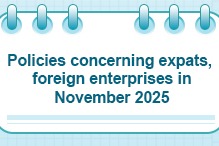Curbing cutthroat competition high on agenda


Following a series of high-level meetings and regulatory actions aimed at curbing excessive internal competition, China's top leadership has once again underscored its commitment to promoting fair market practices.
At a tone-setting meeting of the Political Bureau of the Communist Party of China Central Committee held recently, policymakers called for deeper efforts to build a unified national market and improve market order by tackling disorderly, excessive and cutthroat competition across key sectors.
Commenting on the move, Luo Zhiheng, chief economist at Yuekai Securities, said the country's campaign against unbridled competition has now entered a phase of substantive implementation.
"Unlike previous rounds that focused mainly on upstream sectors such as steel and coal, the current push extends into downstream emerging industries like new energy vehicles, lithium batteries and photovoltaics," Luo said.
"These sectors have lower market concentration and a large number of private players, making top-down administrative capacity restrictions neither feasible nor aligned with pro-private sector policy direction."
Instead, Luo said, a more targeted and nuanced approach is required, especially given the fast-paced nature of innovation in emerging sectors like NEVs, where technological iteration often leads to supply-demand mismatches.
"To truly prevent excessive internal competition, we must focus on supporting innovation and helping companies move through technological cycles, which in turn will stimulate incremental demand," Luo said.
Luo also suggested expanding institutional support for the commercialization of scientific research, such as encouraging universities and institutes to establish specialized technology transfer bodies and share project pipelines with private enterprises.
Wu Songquan, senior chief expert at the China Automotive Technology and Research Center, said the country's auto sector has entered a critical phase of transformation from high-speed growth to structural competition.
"The market is nearly saturated, effective demand is limited and brand concentration remains low. In such an environment, price wars have become a go-to tactic for certain automakers seeking short-term gains. As a result, it leads to excessive, unregulated and homogeneous competition," Wu said.
However, improving the situation is not about banning competition or price cuts altogether, but about ensuring that competition is conducted on a fair and sustainable basis, Luo said.
"This underscores the need to examine the underlying causes of cutthroat competition on a case-by-case basis," he said.
For example, it is important to distinguish whether the disorderly competition stems from misaligned support distorting market entry barriers, or from the natural course of industry development, Luo added.
The Political Bureau meeting also called for stronger oversight of local government practices in attracting investment.
"Dominant auto enterprises may leverage their presence across multiple regions to negotiate for substantial local government support in exchange for new production lines or model launches," Wu said.
Luo cautioned against zero-sum thinking among some local authorities, which may lead to disorderly tax incentives and policy advantages that distort cost structures and industry access.
"At the heart of anti-involution efforts is rule-setting, which calls for long-term mechanisms to ensure fair competition. That begins with regulating local governments' investment promotion practices."




































